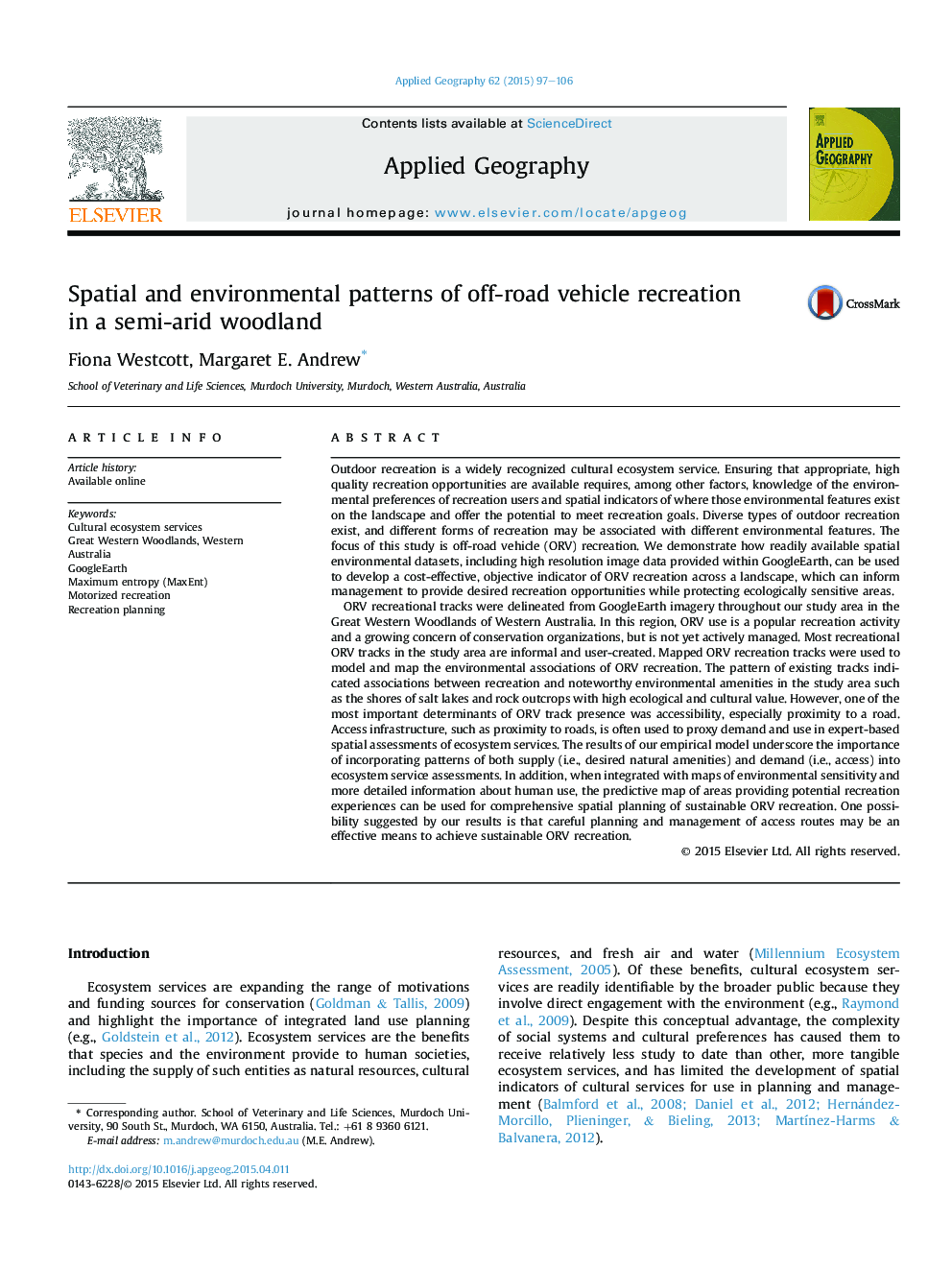| Article ID | Journal | Published Year | Pages | File Type |
|---|---|---|---|---|
| 6538496 | Applied Geography | 2015 | 10 Pages |
Abstract
ORV recreational tracks were delineated from GoogleEarth imagery throughout our study area in the Great Western Woodlands of Western Australia. In this region, ORV use is a popular recreation activity and a growing concern of conservation organizations, but is not yet actively managed. Most recreational ORV tracks in the study area are informal and user-created. Mapped ORV recreation tracks were used to model and map the environmental associations of ORV recreation. The pattern of existing tracks indicated associations between recreation and noteworthy environmental amenities in the study area such as the shores of salt lakes and rock outcrops with high ecological and cultural value. However, one of the most important determinants of ORV track presence was accessibility, especially proximity to a road. Access infrastructure, such as proximity to roads, is often used to proxy demand and use in expert-based spatial assessments of ecosystem services. The results of our empirical model underscore the importance of incorporating patterns of both supply (i.e., desired natural amenities) and demand (i.e., access) into ecosystem service assessments. In addition, when integrated with maps of environmental sensitivity and more detailed information about human use, the predictive map of areas providing potential recreation experiences can be used for comprehensive spatial planning of sustainable ORV recreation. One possibility suggested by our results is that careful planning and management of access routes may be an effective means to achieve sustainable ORV recreation.
Related Topics
Life Sciences
Agricultural and Biological Sciences
Forestry
Authors
Fiona Westcott, Margaret E. Andrew,
